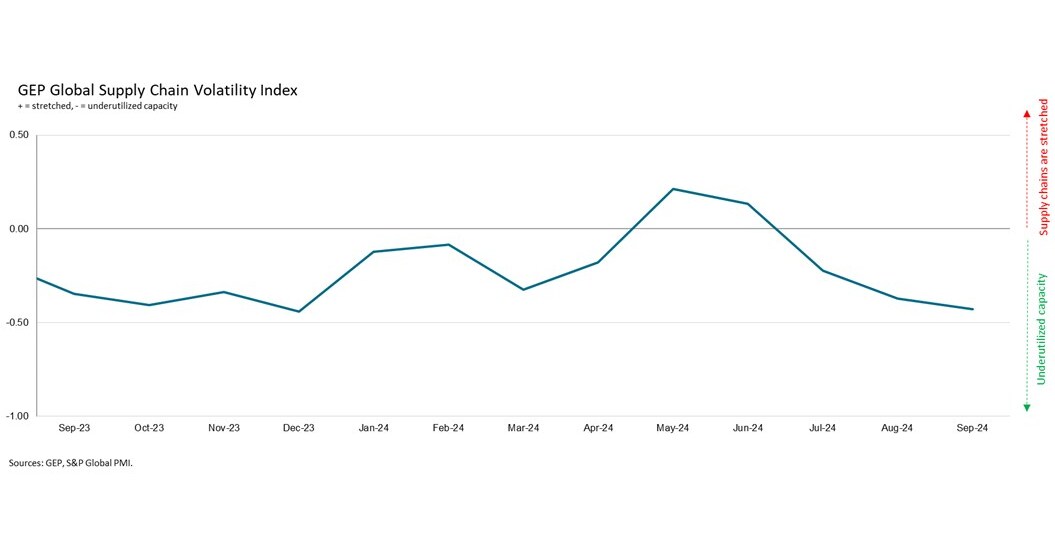
The GEP Global Supply Chain Volatility Index has reported a significant increase in spare capacity for the third consecutive month, reaching its highest level since July 2023. In September 2024, the index decreased to -0.43, indicating a notable shift in global supply chain dynamics as economic weaknesses become more pronounced [b938d71c].
In North America, factory purchasing activity has deteriorated, marking the weakest demand year-to-date. This cautious approach to inventory management has led U.S. manufacturers to aggressively lower their purchasing volumes [b938d71c]. Meanwhile, in Asia, supply chain spare capacity has also risen to a year-to-date high, although China's factory procurement has declined for the third straight month, further complicating the economic landscape [b938d71c].
The situation in Europe has worsened, with the industrial recession deepening and contributing to a decline in demand that has persisted for four consecutive months. The global transportation costs have dipped to their lowest levels since July 2023, complicating supply chain dynamics even further [b938d71c].
Additionally, Typhoon Yagi has impacted Southeast Asian vendors, particularly in Vietnam, exacerbating the challenges faced by suppliers in the region [b938d71c]. The material shortages indicator has fallen to its lowest level since January 2020, suggesting that while labor supply generally meets demand, the overall economic environment remains fragile. Jagadish Turimella, president of GEP, emphasized the critical need for agility and resilience in procurement strategies to navigate these challenges effectively [b938d71c].
As the North America index fell to -0.78 and Europe's index to -0.74, the situation underscores the interconnectedness of global supply chains and the ongoing adjustments businesses must make in response to shifting economic conditions. The next index release is scheduled for November 12, 2024, which will provide further insights into these evolving trends [b938d71c].